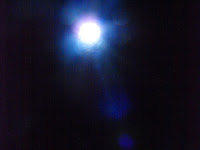The Zenith Sun

A common characteristic in Mesoamerica is the observance of the sun's zenith passage. This happens when the sun passes directly overhead at noon. It appears twice a year around late April and mid-August. Many ancient sites from Mexico east to the Yucatan seem to have systems built into their architecture to show this phenomenon. In the Mayan city of Kabah there is a cylindrical stone marker placed vertically in a plaza that seems to act as a gnomon that will produce a shadow every day except during the time of the sun's zenith position when the shadow disappears.
The Mixtec A-O glyph
The Mixtec A-O glyph was their symbol for 'year'. The glyph itself has intrigued me since high school. Why this particular design, a large 'A' with a circle that interweaves through its legs? If the observer were to look straight down on this glyph that circle becomes a sign for infinity (∞). It also resembles the pattern for the solar analema, albeit with equal sides.
Crossed Trapezes
 |
| Glyph of a priest (?) wearing a hat of crossed trapezes |
Some archaeologists think this is a symbol for a 'Daykeeper'. In 1974, Adrian Digby from the British Museum built a replica of this and proposed that it is a combination sun dial and astrolabe. I have been unable to find the original publication but I did make my own crossed trapeze.
As cheesy as my cardboard version is, I couldn't help but notice that the shadow cast by this device is strikingly similar to the A-O glyph. Are all of these devices related and depict different levels of technical achievement? Maybe some day a bored archaeologist or astronomer will stumble upon this post and start a firestorm of protests for stepping on their intellectual turf.





I'm sure that you will eventually be found out. !! Good post. Wasn't the scene in Raiders of the Lost Ark something of a similar theme?
ReplyDeleteSo happy to see it before you are discovered! :)
ReplyDelete